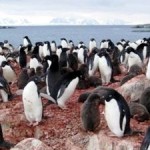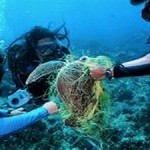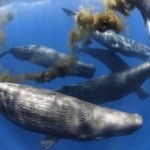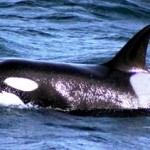“We observe among fish in the North Sea that larger individuals of a species are affected first at extreme temperatures. In connection with climate warming, there is generally a trend that smaller species replace larger species in a region. Today, however, plants and animals in the warmest marine environments already live at their tolerance limit and will probably not be able to adapt. If warming continues, they will migrate to cooler areas and there are no other tolerant animal and plant species that could repopulate the deserted habitats,” says Prof. Dr. Hans-Otto Pörtner of the Alfred Wegener Institute. The biologist initiated the current study and is the coordinating lead author of the chapter “Ocean systems” in the Fifth Assessment Report.
The new meta-study shows that their complex structure sets tighter limits for multi-cellular organisms, i.e., animals and plants, within which they can adapt to new living conditions. Individual animal species can reduce their body size, reduce their metabolism or generate more haemoglobin in order to survive in warmer, oxygen-deficient water. However, marine animals and plants are fundamentally not able to survive in conditions exceeding the temperature threshold of 41 degrees Celsius.
In contrast, simple unicellular organisms like bacteria benefit from warmer sea water. They reproduce and spread.
“Communities of species in the ocean change as a result of this shift in living conditions. In the future, animals and plants will have problems to survive in the warmest marine regions and archaea, bacteria as well as protozoa will spread in these areas. There are already studies showing that unicellular algae will be replaced by other unicellular organisms in the warmest regions of the ocean,” says Prof. Dr. Hans-Otto Pörtner.
The next step for the authors is addressing the question regarding the role the complexity of species plays for tolerance and adaptation to the third climatic factor in the ocean, i.e. acidification, which is caused by rising carbon dioxide emissions and deposition of this greenhouse gas in seawater.
Living at the Limit
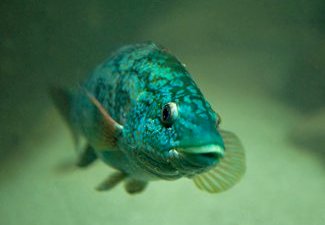
For generations ocean dwellers have adapted to the conditions in their home waters: to the prevailing temperature, the oxygen concentration, and the degree of water acidity. They grow best and live longest under these living conditions.
However, not all creatures that live together in an ecosystem have the same preferences. The Antarctic eelpout, for instance, lives at its lower temperature limit and has to remain in warmer water layers of the Southern Ocean. If it enters cold water, the temperature quickly becomes too cold for it. The Atlantic cod in the North Sea, by contrast, would enjoy colder water as large specimens do not feel comfortable in temperatures over ten degrees Celsius. At such threshold values, scientists refer to a temperature window: every poikilothermic ocean dweller has an upper and lower temperature limit at which it can live and grow. These “windows” vary in scope. Species in temperate zones like the North Sea generally have a broader temperature window. This is due to the extensively pronounced seasons in these regions. That means the animals have to withstand both warm summers and cold winters.
The temperature window of living creatures in the tropics or Polar Regions, in comparison, is two to four times smaller than that of North Sea dwellers. On the other hand, they have adjusted to extreme living conditions. Antarctic icefish species, for example, can live in water as cold as minus 1.8 degrees Celsius. Their blood contains anti-freeze proteins. In addition, they can do without haemoglobin because their metabolism is low and a surplus of oxygen is available. For this reason, their blood is thinner and the fish need less energy to pump it through the body – a perfect survival strategy. But: icefish live at the limit. If the temperature rises by a few degrees Celsius, the animals quickly reach their limits.
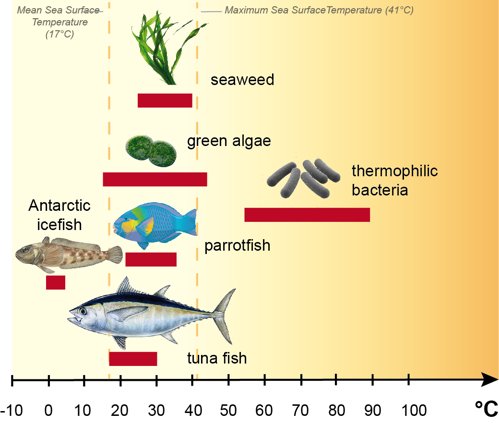
The current paper, with the title “Climate Sensitivity across Marine Domains of Life: Limits to Evolutionary Adaptation Shape Species Interaction”, was published 26th June in Global Change Biology.
Check the following link to read/download the Full Study:
http://onlinelibrary.wiley.com/doi/10.1111/gcb.12645/abstract
Source: AWI.
The Alfred Wegener Institute (AWI) conducts research in the Arctic, Antarctic and oceans of the high and mid-latitudes. It coordinates polar research in Germany and provides major infrastructure to the international scientific community, such as the research icebreaker Polarstern and stations in the Arctic and Antarctica. The Alfred Wegener Institute is one of the 18 research centres of the Helmholtz Association, the largest scientific organisation in Germany.

